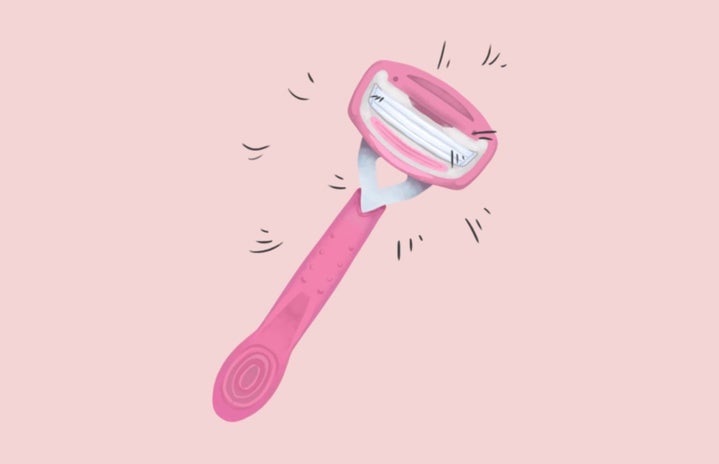Dermaplaning and women’s facial shaving have become popularized in the last few years, spread by beauty gurus and influencers across platforms such as YouTube, Instagram, and TikTok. Despite these videos being satisfying to watch, they also offer solutions for hyperpigmentation, cakey makeup application, and more. But many of these videos lack answers to essential questions about women’s facial shaving, leading to fears and doubt.
What is dermaplaning?
Dermaplaning is the process by which a doctor or aesthetician removes the peach fuzz, dead skin, and other debris off a person’s face (typically a woman or other individual with thinner face hair via a razor). When you do this to yourself, it is simply facial shaving.
Will my peach fuzz grow back thicker?
NO. This is the most asked question and the biggest fear many women have when it comes to shaving their faces. Peach fuzz— also known as vellus hair— is not the kind of hair that grows on our bodies, under our arms, or in rivaled areas. When cut, it grows back to the same length, color, and thickness as before. This means that even if you try shaving your face and don’t like it, there is nothing to worry about, and you will appear the same as before.
How long does it take for hair to grow back?
I tend to find that my facial hair grows back between three weeks to a month, so I usually end up shaving about every four weeks. This seems to be the trend among most people who shave their peach fuzz, but it can take longer or shorter due to genetics.
How do I do it myself?
Holding your skin in place taut, angle your razor at 45 degrees and gently pass it over your skin. Holding your skin helps create a straight surface that is easier to work with. Repeat this process along all desired areas of your face.
Does it hurt?
It shouldn’t, if you’re doing it correctly. Sometimes if your face is too dry, skin can feel tight after shaving. The best way to prevent this is by using a moisturizer or face shaving lotion before starting the process. Make sure not to go over the same spot too many times either. This can irritate the skin and allows for more chance of an accident. Two or three passes over one spot of skin is usually enough.
What if I cut myself?
If you are doing the process properly, this shouldn’t happen. However, if you’re concerned about cuts and scrapes, look into razors with guards against cutting the skin. Be gentle, and slow. If you do manage a cut, immediately pause or stop shaving and find a first aid kit. Another option is to find a professional to do it for you.
Who should I see if I don’t want to do it myself?
If you want a professional to shave your face for you, look for a doctor or aesthetician with training in facial shaving. Some barbers also offer face-shaving services for peach fuzz, but it is important to look into the person you going to see. Facial shaving should be on their list of services, and they should keep their workplace hygienic (when blades are involved, it is crucial they are kept sanitary).
What’s the hardest part to shave?
I find that the hardest places to shave are the chin and forehead. This is because they are round, not flat like the cheeks or jaw. Even with puffy cheeks, I can gently stretch the skin with my fingers to make a safe, smooth surface. The chin and the forehead take more time and focus, so please be careful.
What type of razors are best?
There are razors specifically designed for this purpose! Shorter or longer is your preference, but single blade straight edge facial razors are your friend. You can find cheap ones in drug stores, or shop online for higher-grade, more professional blade.
Is worth it?
YES. Nobody can know without trying whether or not they like it, so I encourage finding out for yourself if you’re interested. However, I have found that shaving my peach fuzz allows me to put on smoother, more flawless makeup. Additionally, my skincare products absorb into my skin better, and I have less breakouts. Facial shaving is not everyone’s thing, but no one should be afraid to try because they have questions or fears.


